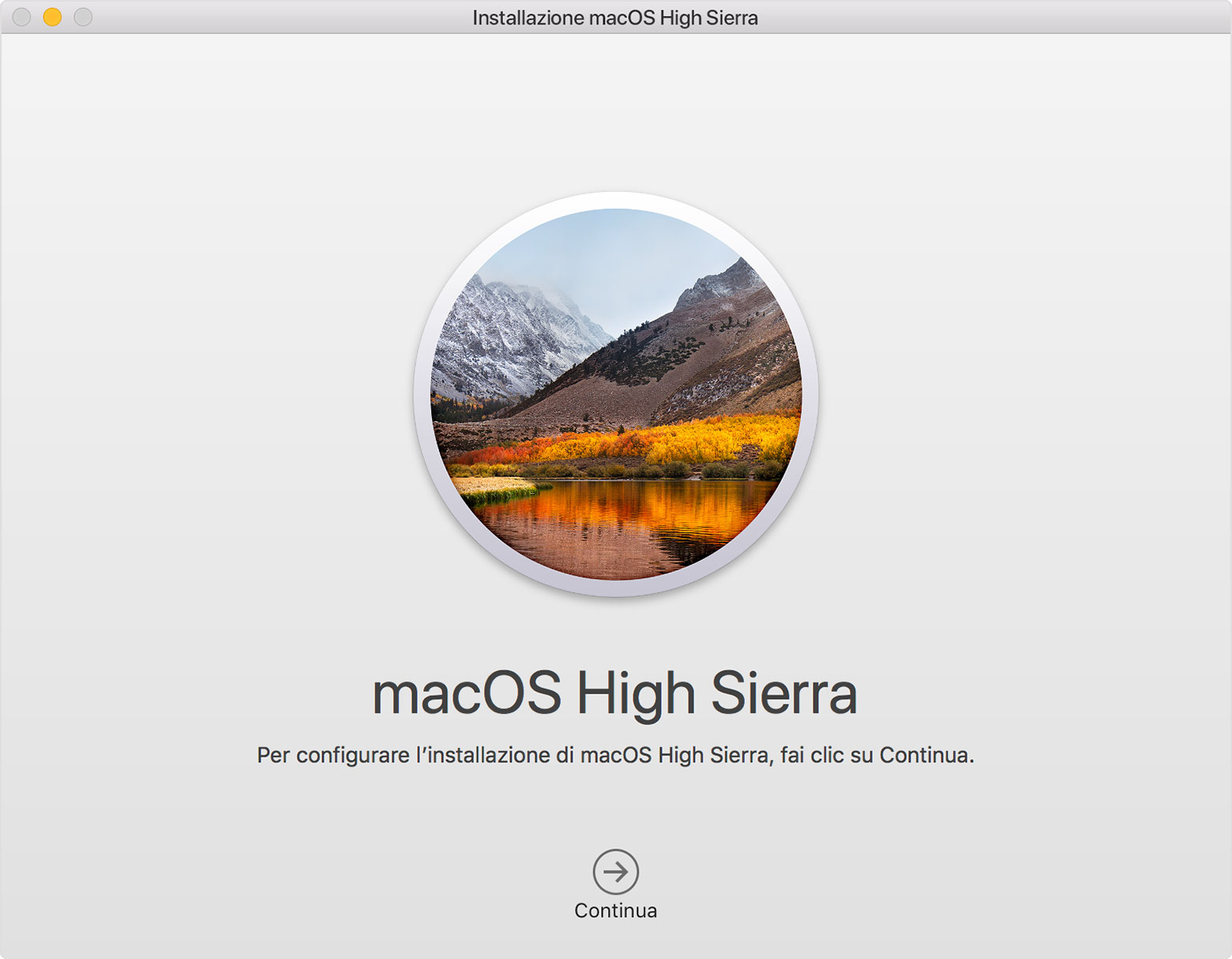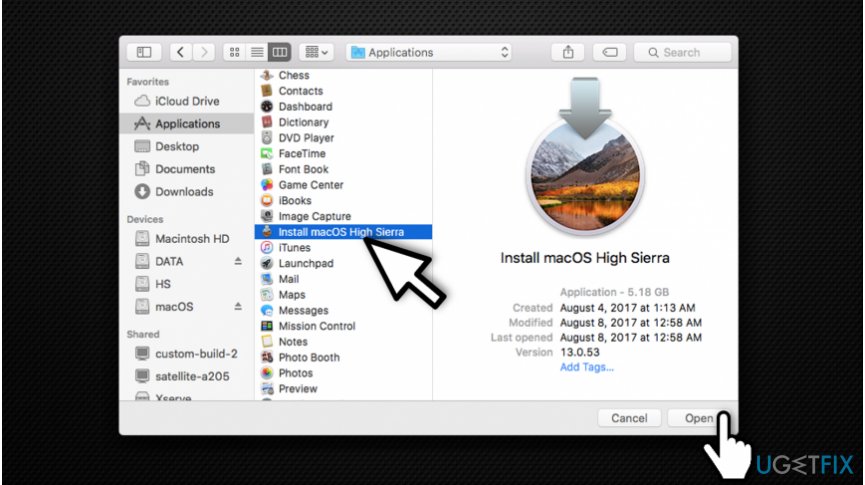

- #DOWNLOAD MACOS HIGH SIERRA INSTALLER HOW TO#
- #DOWNLOAD MACOS HIGH SIERRA INSTALLER INSTALL#
- #DOWNLOAD MACOS HIGH SIERRA INSTALLER UPDATE#
- #DOWNLOAD MACOS HIGH SIERRA INSTALLER ISO#
Mac-pro-de-bernard-2:~ bernardbaz$ mv /tmp/ ~/Desktop/InstallSystem. If you wish to continue type (Y) then press return: Y Mac-pro-de-bernard-2:~ bernardbaz$ sudo /Applications/Install\ macOS\ High\ Sierra.app/Contents/Resources/createinstallmedia –volume /Volumes/install_build dev/disk3s2 Apple_HFS /Volumes/install_build Mac-pro-de-bernard-2:~ bernardbaz$ hdiutil attach /tmp/ -noverify -mountpoint /Volumes/install_build Mac-pro-de-bernard-2:~ bernardbaz$ hdiutil create -o /tmp/HighSierra.cdr -size 5200m -layout SPUD -fs HFS+J “Install macOS High Sierra” is busy and cannot be unmounted. Merci beaucoup Tyler, however at the last but one step (hdiutil detach) I got an error saying that disk3, i.e. If you wish to continue type (Y) then press return: yĬopying to disk: 0%… 10%… 20%… 30%… 40%… 50%… 60%… 70%… 80%… 90%…Įrror: Error Domain=NSCocoaErrorDomain Code=512 ““InstallESD.dmg” couldn’t be copied to “SharedSupport”.” UserInfo=The copy of the installer app failed. To continue we need to erase the volume at /Volumes/install_build. Sudo /Applications/Install\ macOS\ Mojave\ Beta.app/Contents/Resources/createinstallmedia –volume /Volumes/install_build
#DOWNLOAD MACOS HIGH SIERRA INSTALLER ISO#
I also got this error when creating the ISO file on step 3: ending with “Press ESC in 0 seconds to skip startup.nsh or any other key to continue. I use the Mojave.iso as the boot file, and I get this screen: “UEFI interactive shell” etc.
#DOWNLOAD MACOS HIGH SIERRA INSTALLER INSTALL#
The resulting ISO can be used to create bootable USBs, DVDs, install VMs, or simply to archive for your backups “just in case”.īut I am trying to use the ISO file I created to launch a virtual machine (10.13 Host, 10.14 guest). The resulting file on my desktop is almost ready to use. Here are some of my outputs for you to review (after the first three commands) Hdiutil convert ~/Desktop/InstallSystem.dmg -format UDTO -o ~/Desktop/HighSierra.iso Hdiutil detach /Volumes/Install\ macOS\ High\ Sierra Sudo /Applications/Install\ macOS\ High\ Sierra.app/Contents/Resources/createinstallmedia -volume /Volumes/install_build Hdiutil attach /tmp/ -noverify -mountpoint /Volumes/install_build
#DOWNLOAD MACOS HIGH SIERRA INSTALLER UPDATE#
Run these commands one at a time ( Update :: I changed the 5130m to 5200m based on feedback from the comments) hdiutil create -o /tmp/HighSierra.cdr -size 5200m -layout SPUD -fs HFS+J
#DOWNLOAD MACOS HIGH SIERRA INSTALLER HOW TO#
Overview of how to create a bootable macOS 10.13 High Sierra ISO image:Ĭlick this link to open the macOS High Sierra download in the App StoreĮspecially if you’ve already upgraded to high sierra and deleted the installer data (with CleanMyMac etc) you will need to download this again before proceeding with this article. This means you actually need a Mac or a MacBook to create this bootable ISO.

To abide with Apple’s terms of use, you must go through official channels to obtain the macOS installer. Install the MPI Tool Kit onto your Windows office system before you begin. This guide will also be useful for those who can run Virtual Machines of macOS in environments like VirtualBox etc. MacOS High Sierra Installer Download the prepared clover.img and OSX10.13.1Installer.hfs from this article. As an owner of a MacBook Pro, it’s slightly unsettling that I wouldn’t necessarily be able to plug in a bootable USB or insert a DVD with the macOS installer image in the event that I needed to re-install my OS because my SSD ate the dust, or something. OS X was a different story, but also you had to pay for those versions. The applications are available, but they will be not updated anymore.Normally you can’t obtain bootable media of macOS. The development of the old versions is discontinued. Requirements: Intel-based Mac or Mac with Apple silicon using macOS Ventura 13. Use the correct version, and don't try to use a version intended for an earlier operating system. There is a specific version of OnyX for each major version of the operating system. OnyX is a reliable application which provides a clean interface to many tasks that would otherwise require complex commands to be typed using a command-line interface. OnyX is a multifunction utility that you can use to verify the structure of the system files run miscellaneous maintenance and cleaning tasks configure parameters in the Finder, Dock, Safari, and some Apple applications delete caches remove certain problematic folders and files rebuild various databases and indexes and more.


 0 kommentar(er)
0 kommentar(er)
